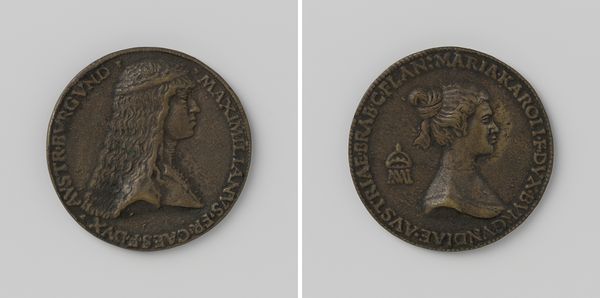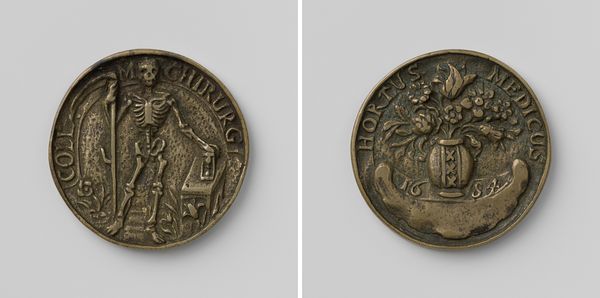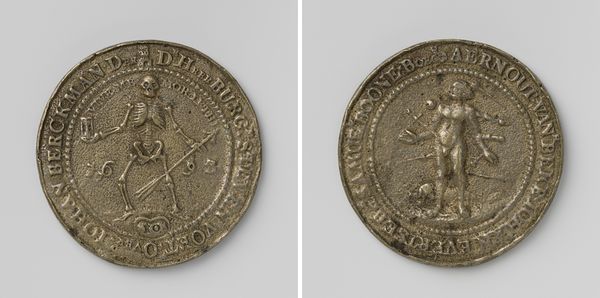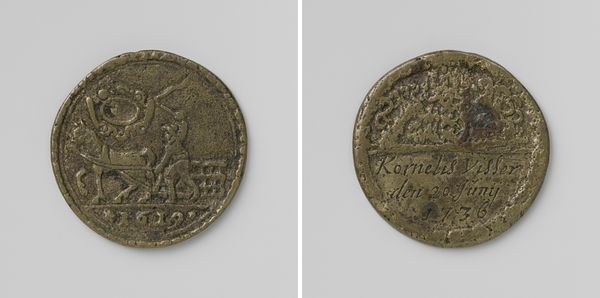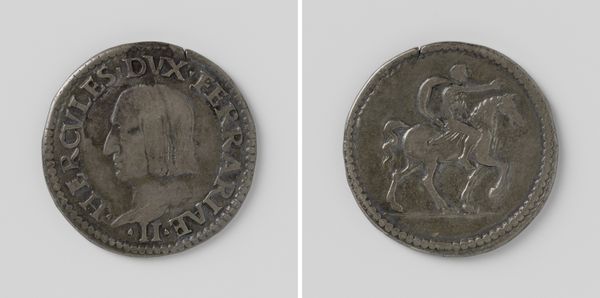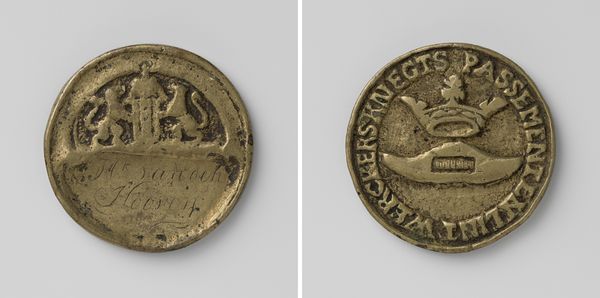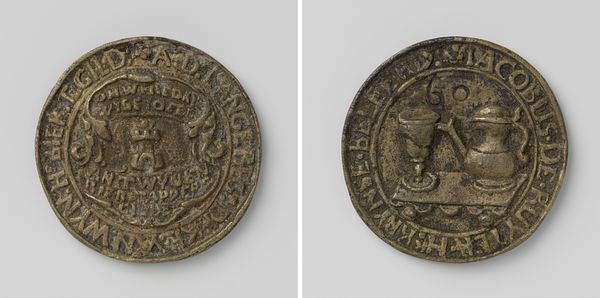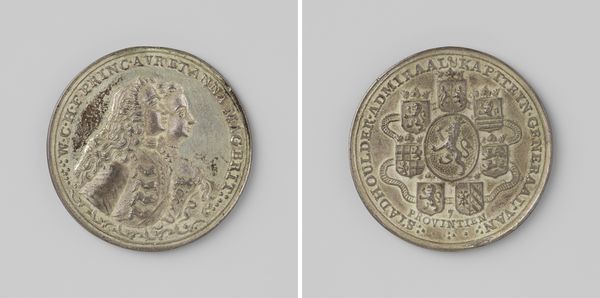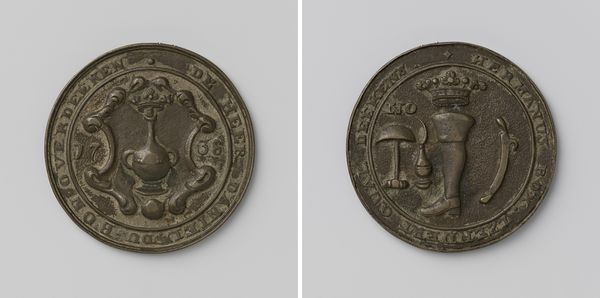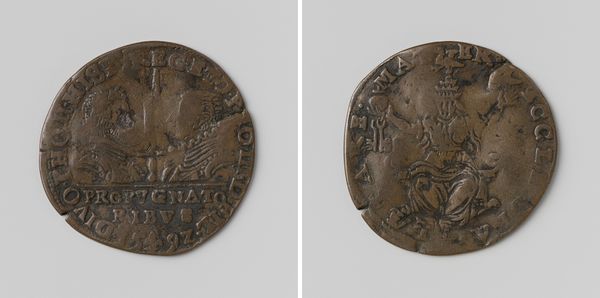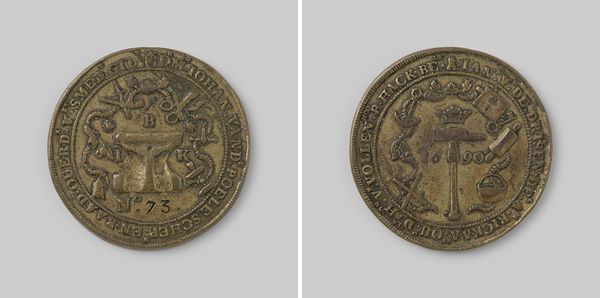
Maximiliaan, aartshertog van Oostenrijk en Maria, hertogin van Bourgondië 1479
0:00
0:00
relief, bronze
#
portrait
#
medieval
#
relief
#
bronze
#
italian-renaissance
#
early-renaissance
Dimensions: diameter 4.8 cm, weight 35.23 gr
Copyright: Rijks Museum: Open Domain
Curator: This striking bronze relief, crafted around 1479 by Giovanni di Candida, presents a double portrait of Maximilian, Archduke of Austria, and his wife, Mary, Duchess of Burgundy. The style clearly echoes the Early Renaissance fascination with classical forms and portraiture. Editor: Wow, it's kind of brutal, isn't it? I mean, the faces are so rigid and severe. Not exactly radiating marital bliss. And, literally cast in bronze! Heavy stuff. Curator: The medium certainly contributes to that sense of gravitas. Bronze, historically associated with power and permanence, lends an enduring quality to their representation. Each figure is framed by an inscription bearing their name and titles, reinforcing their dynastic importance. Look closely at the symbols included. Editor: Yes, that stylized gate, I believe it is, that’s pretty telling, eh? Confined to their roles, but undeniably regal. Almost like actors on the historical stage... forced to perform, never escaping their duties, however gilded their existence might seem. Curator: Absolutely. Portraiture during this period served less as an expression of individual personality and more as a declaration of status, lineage, and political authority. The meticulous details in their garments and hairstyles, typical of late medieval fashion, reinforce that purpose. It visually anchors them to their identity as important European leaders. The way the inscription almost constricts the portraits feels very controlled. Editor: A very, very far cry from the selfie culture of today, eh? Imagine if they had Instagram... Actually, it makes me wonder about the relationship these two had. Was it an arranged marriage, a political alliance cast in bronze? I suppose one cannot extract from a relief feelings that may have ran deeper. Curator: Most definitely arranged. And designed to cement political ties between Austria and Burgundy. So, even beyond the artistic representation, every element—the material, the inscription, the very act of commissioning the piece—speaks to power, strategy, and dynastic ambition. The lack of softness or humanity in the features underscores the formal nature of the whole endeavor. Editor: I guess it leaves me feeling a little bit sad for them both. So very much was expected, so very much imposed. Thank you, that’s given me something to reflect upon. Curator: Indeed. A compelling example of how art reveals more than what meets the eye at first glance.
Comments
No comments
Be the first to comment and join the conversation on the ultimate creative platform.
